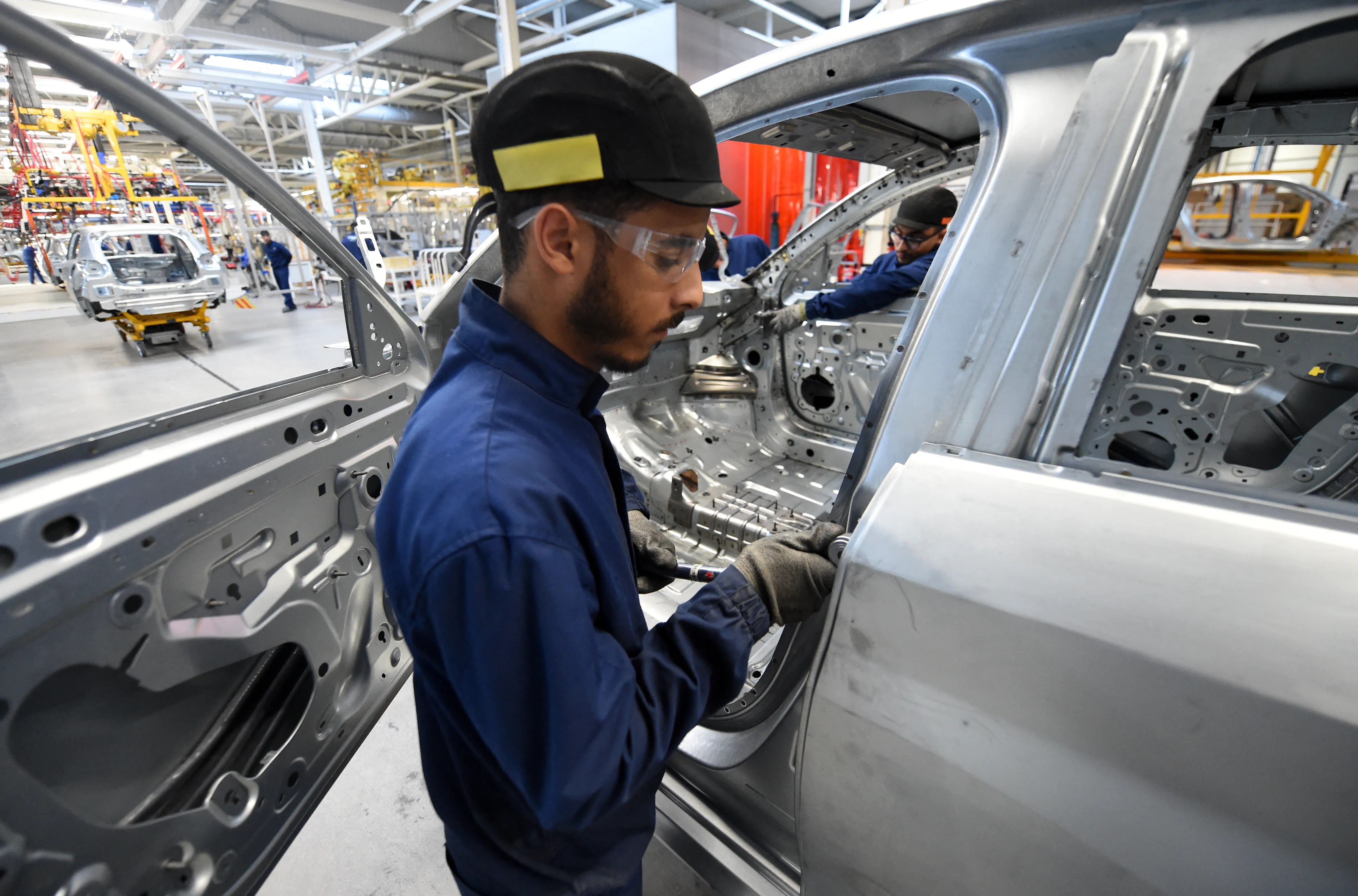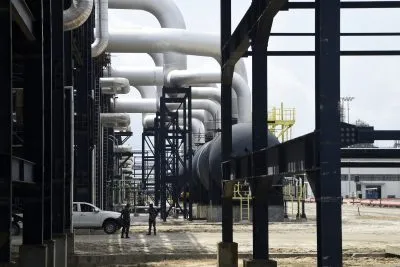Making the most of its geographical position on the edge of Europe, Morocco’s economic success over many years had been built on low-cost manufacturing of food, textiles and other lower cost goods that benefited from trade deals with the European Union.
Now, however, the focus has switched to higher value, higher tech sectors, such as pharmaceuticals, aerospace and the automotive sector, with Moroccan companies working with international partners to build integrated supply chains.
The Moroccan economy recovered strongly last year, achieving growth of 7.4%, in comparison with the 6.3% contraction recorded in 2020, largely as the result of strong growth in the manufacturing and agricultural sectors.
Growth this year is likely to be a more modest 3.1%, according to Renaissance Capital, as the global economy remains weak in the face of the prolonged Covid-19 pandemic, the Russian invasion of Ukraine and the associated effects on global demand and supply chains. The manufacturing sector accounts for 14% of GDP, slightly ahead of agriculture with 13%.
Manufacturers have long been attracted to the country by its location, with lower labour costs encouraging companies to set up processing and manufacturing plants specifically to target European markets. Over the past decade, improvements in national infrastructure have complemented this geographical advantage.
In particular, the new port of Tanger Med, with annual handling capacity of 9m TEU/year, is now the biggest container port in Africa by far, larger than competitors on the other side of the Mediterranean Sea in Spain (a TEU, or 20-foot equivalent unit, is the standard size of a shipping container).
The port has encouraged export-orientated businesses to set up operations in and around Tangier, while improved road and rail infrastructure within Morocco has made it easier for manufacturers across the country to make use of the facility.

Automotive sector boosts exports
The automotive sector was one of the first advanced manufacturing industries to take off in Morocco and has quickly become one of its success stories. It is the most important export sector, generating $8.1bn in exports in 2020, although this was $900m lower than in the previous year.
National production capacity now exceeds 700,000 vehicles a year, with many exported to Western Europe. Exports reached 358,745 units in 2021, up 18% on 2020, with Renault and Stellantis the biggest investors.
Renault has opened a new factory in Tangier and Stellantis has opened a new plant in Kenitra, north of Rabat, north of Rabat, which is connected to Tanger Med by high-speed rail. Stellantis was created in 2021 following the merger of Fiat Chrysler and French firm PSA, which itself was formerly known as Peugeot Citroën, and owns brands including Alfa Romeo, Chrysler, Citroën, Dodge, Fiat, Jeep, Maserati, Mopar, Opel, Peugeot and Vauxhall.
Far more jobs are created in the automotive industry through component suppliers than in actual vehicle manufacturing and assembly, and it is here that Morocco has enjoyed particular success. About 200 international automotive suppliers now operate in Morocco, including US firm Lear, which produces electrical systems and vehicle seats.
Exported vehicles now contain an average of 63% Moroccan-made components and both Renault and Stellantis have announced plans to source 80% of the components used in their Moroccan plants from local suppliers. In March, the government announced $180m worth of investment by five automotive cable manufacturers, including $78m by Japanese firm Yazaki, which is expanding its operations in Tangier and Kenitra.
Rabat is now banking on growing international demand for electric vehicles (EVs) to drive growth in the industry. Morocco already produces about 40,000 EVs a year and now Stellantis has announced that it will build its two-seater Opel Rocks-e electric car in Kenitra. Almost all units are expected to be exported as the EV market in Morocco itself is very small, at just 1,000 vehicles a year, partly because of the lack of recharging infrastructure. However, in 2021, US giant Tesla established Supercharger stations at Tangier Al Houara Hilton Resort and at the Onomo Hotel in Casablanca.
Moroccan firm Maribat is building the country’s first electric battery plant outside Casablanca at a cost of Dh75m ($7.6m). Electric batteries are one of the main costs in EV production but manufacturers can make use of Morocco’s own cobalt reserves, which lie outside Marrakesh.
In addition, semiconductor producer STMicroelectronics has opened a microchip plant for EVs in Casablanca, while Chinese firm BYD is considering developing an EV plant in Tangier.
Aerospace attracts investors
The government has sought to replicate its success with automotive manufacturing in the aerospace sector, which provides the same kind of high-quality jobs and benefits for the wider economy.
It has specifically sought to encourage the creation of an aerospace industry through agglomeration, persuading investors to set up operations next to each other in order to create supply chains. More than 140 companies now work in the Moroccan aerospace sector, covering aircraft maintenance, component manufacturing and airport development.
The two global aerospace behemoths, Airbus and Boeing, have set up operations in the country, alongside Bombardier, Thales and a growing number of suppliers, including most recently French firm Le Piston, which opened a plant to produce engine components in February, with initial investment of $6m. In March, the governments of Morocco and Israel signed an agreement to cooperate in civilian aerospace projects.
Morocco’s aerospace exports increased in value by 21.9% last year to Dh15.4bn ($1.6bn) according to government figures, after falling by around 30% in 2020 as a result of the global downturn in the airline industry caused by the Covid-19 pandemic. Exports are still below the $1.9bn figure achieved in 2019.
The country’s aerospace sector is competing for a global reputation, with Morocco ranked 36th worldwide in a PwC table of aerospace manufacturing attractiveness, although it was placed third in the Middle East and Africa. According to government figures, about 10% of the country’s 17,500 aerospace jobs were lost in 2020, but this was far lower than the 40% average fall globally. Despite the decline in exports, employers opted to retain staff, predicting that the downturn would be relatively short-lived.
The Moroccan aerospace suppliers’ association GIMAS has said that companies operating in the sector diversified into other areas, such as medical equipment, as a result of the pandemic. An offshoot of France’s LPG Group called SERMP, which is based in Casablanca, started by making face masks and ventilators but has now decided to operate in that sector on a more permanent basis, producing a wider range of technical medical equipment.
Green credentials
Airbus has announced plans to produce carbon-free aircraft by 2035 and manufacturers in Morocco could have some advantages in competing for a share of the business.
Solar and wind power now accounts for 38% of the Moroccan generation mix, just shy of the government’s target of 42% by 2020. However, only 20% of actual power production comes from renewables as both solar and wind power plants are intermittent producers. By contrast, coal-fired plants produce about 40% of all electricity, so the country has some way to go before it can compete with renewable energy leaders.
Rabat is on course to achieve 1.8 GW onshore wind capacity by 2026 and has also announced plans for offshore wind projects. With wind speeds of up to 11 metres/second in the north, Morocco has some of the most attractive wind resources in Africa, although Egypt is developing capacity at a slightly faster rate and South Africa is a long way ahead.
With the 580 MW Noor project, Morocco has the world’s biggest concentrated solar power plant, which – unlike solar photovoltaics – offers power generation during hours of darkness. Moreover, green hydrogen – which could be produced using wind or solar power – could help to displace more fossil fuel consumption. Plans for a 10 GW project have already been drawn up but the final investment decision is pending.

Pharmaceutical sector expands
Another of the main planks of Morocco’s manufacturing strategy has been to encourage investment in pharmaceuticals. Most recently, work began in January on building the SENSYO Pharmatech plant in Benslimane, near Casablanca.
Backed by Swedish firm Recipharm, the facility will have the capacity to produce 116m vaccines a year by 2024, including Covid vaccines. Production will supply both local and export markets. The country already produces 3m doses of the Chinese Sinopharm Covid vaccine a month.
Recipharm CEO Marc Funk commented at the time: “Together with the other parties involved, we will be able to work to offer Africa a concrete opportunity to gradually gain health independence from Western countries and ultimately help to ensure it is less vulnerable in times of crisis.”
In another sign of growing economic cooperation between Morocco and Israel since the restoration of diplomatic relations between the two countries in 2020, Moroccan firm Cooper Pharma is already working with Teva Pharmaceutical to distribute the Israeli firm’s products. In April, Cooper Pharma’s CEO, Cheikh Lahlou, said that his company hoped to work alongside other Israeli companies to co-develop innovative biotech products.
Want to continue reading? Subscribe today.
You've read all your free articles for this month! Subscribe now to enjoy full access to our content.
Digital Monthly
£8.00 / month
Receive full unlimited access to our articles, opinions, podcasts and more.
Digital Yearly
£70.00 / year
Our best value offer - save £26 and gain access to all of our digital content for an entire year!
 Sign in with Google
Sign in with Google 



